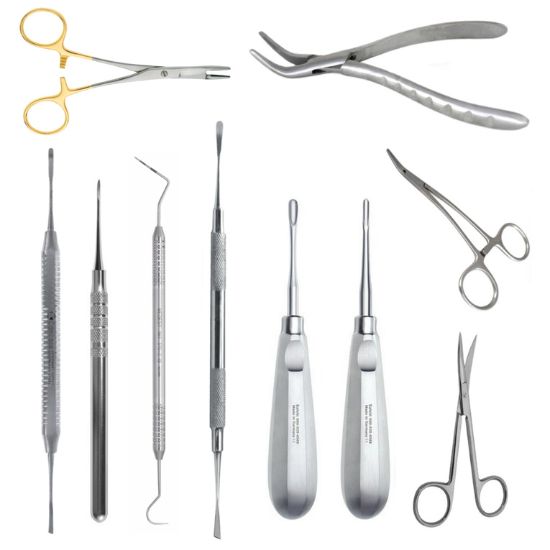Dental instruments are essential tools in the field of dentistry. They are use for diagnosing dental conditions, performing surgical procedures, and ensuring effective treatment and care. Understanding the classification of these instruments is crucial for dental professionals to ensure precision in their work and maintain high standards of patient care. This comprehensive guide will explore the different categories of dental instruments, their uses, and some key considerations for their maintenance and sterilization.
Introduction to Dental Instruments:
Dental instruments are specifically design tools used by dentists to provide dental treatment. They include tools to examine, manipulate, treat, restore, and remove teeth and surrounding oral structures. Standard instruments are the mirror, probes, and tweezers, but the range extends to more complex devices such as drills and orthodontic pliers.
Classification Based on Function:
Dental instruments can be classifies into several categories base on their function. Understanding these categories helps dental professionals quickly select the right tool for a specific task.
Diagnostic Instruments:
These are use to examine the teeth and gums. Common diagnostic dental instruments include:
Mouth Mirrors:
These help in visualizing the mouth cavities where visibility with the naked eye is difficult.
Dental Probes:
Use to measure pocket depths around a tooth to help diagnose gum diseases.
Explorers:
Sharp instruments use to explore the hardness and texture of teeth.
Cutting and Dissecting Instruments:
These tools are use for cutting and removing tissues. They include:
Scalpels:
Use for incisions during surgical procedures.
Chisels:
Primarily use in orthodontic procedures to remove or shape bone and teeth.
Excavators:
Employee to remove decayed tooth material.
Restorative Instruments:
These instruments are use for the placement, sculpting, and finishing of dental materials. Examples include:
Amalgam Carriers:
Used to carry and dispense amalgam into cavities.
Burnishers and Carvers:
Used to contour and shape fillings.
Composite Placement Instruments:
Designes for composite materials to fill cavities.
Periodontal Instruments:
Specifically design for the prevention, diagnosis, and treatment of diseases affecting the periodontium. Tools in this category include:
Periodontal Scalers and Curettes:
Use to remove plaque and calculus from teeth surfaces.
Periodontal Knives:
For gingival and periodontal surgery.
Orthodontic Instruments:
These are use in the correction of malocclusion and to align teeth. Orthodontic tools include:
Pliers:
For bending wires.
Brackets Positioning Instruments:
Assist in placing and securing brackets on teeth.
Surgical Instruments:
Used primarily in oral surgery, these instruments include:
Forceps:
For extracting teeth.
Elevators:
To loosen teeth and fracture tooth fragments prior to extraction.
Bone Files:
For smoothing bone edges after extractions.
Considerations for Care and Maintenance
Proper care and maintenance of dental instruments are vital to extend their life and prevent the spread of infections.
Here are some important considerations:
Cleaning and Sterilization:
All instruments must be thoroughly clean and sterilize between patients. Autoclaving is the most effective sterilization technique, but some instruments may require specific care due to their delicate nature.
Handling and Storage:
Proper handling and storage are essential to prevent damage and maintain instrument sharpness and functionality. Instruments should be store in organize trays and holders to avoid accidental damage.
Regular Inspection:
Regular inspections are necessary to ensure that all instruments are in good working condition. Dull instruments or those with defects should be repair or replace promptly to maintain treatment efficacy and safety.
Conclusion
Dental instruments play a pivotal role in the delivery of effective dental care. As thorough understanding of the types of instruments and their specific uses is crucial for every dental professional. By ensuring these instruments are properly maintain, clinicians can provide safe and efficient treatment to their patients, leading to better dental health outcomes.
In conclusion, whether you are a seasons dental professional or a student beginning your journey in dentistry, familiarizing yourself with the classification of dental instruments is essential. This knowledge not only aids in choosing the correct tool for each procedure but also enhances the quality of care provide to patients.

